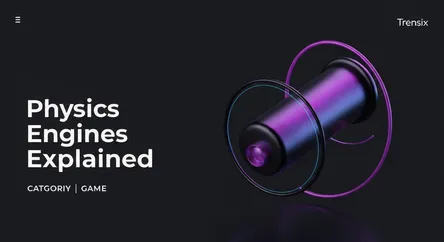Game
Physics Engines Explained

Discover what a physics engine is and how it creates realistic motion, collision, and fluid dynamics in your favorite video games and simulations.
What is it?
A physics engine is specialized software that simulates physical systems within a digital environment, like a video game. It's the code that governs how objects interact, handling complex calculations for gravity, mass, friction, and collision detection. When a character jumps, a building crumbles, or a car drifts, the physics engine determines how these objects move and react according to physical laws. Popular engines like NVIDIA's PhysX, Havok, and the open-source Bullet Physics Library power countless titles, from blockbuster hits to indie games.
Why is it trending?
The trend is driven by the demand for hyper-realism and immersive gameplay. Modern hardware can now handle incredibly detailed physics simulations in real-time. Developers use these engines to create dynamic, destructible environments and emergent scenarios where the world reacts believably to player actions. The growth of virtual reality (VR) and augmented reality (AR) also necessitates highly accurate physics to create a convincing sense of presence and interaction, making these engines more crucial than ever for believable virtual worlds.
How does it affect people?
For gamers, a robust physics engine enhances immersion, turning a static world into an interactive playground with believable consequences. This leads to more engaging and unpredictable gameplay. For developers, engines provide powerful tools to build complex interactive systems without coding physics from scratch. This efficiency allows them to focus on crafting unique mechanics that leverage realistic physical interactions, fundamentally changing how players perceive and engage with digital entertainment.